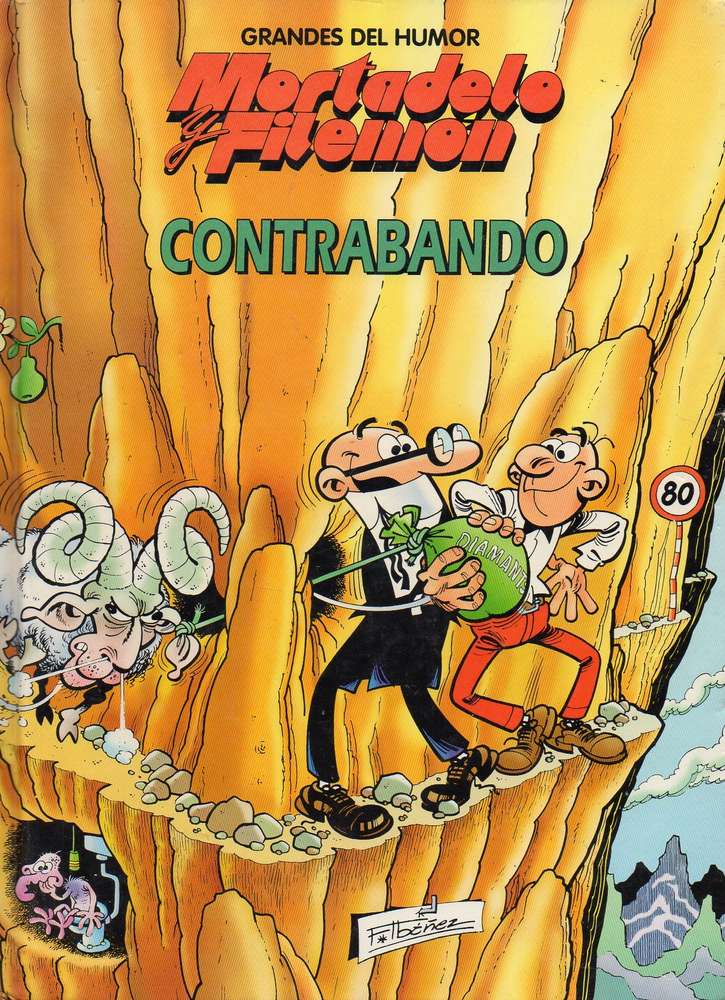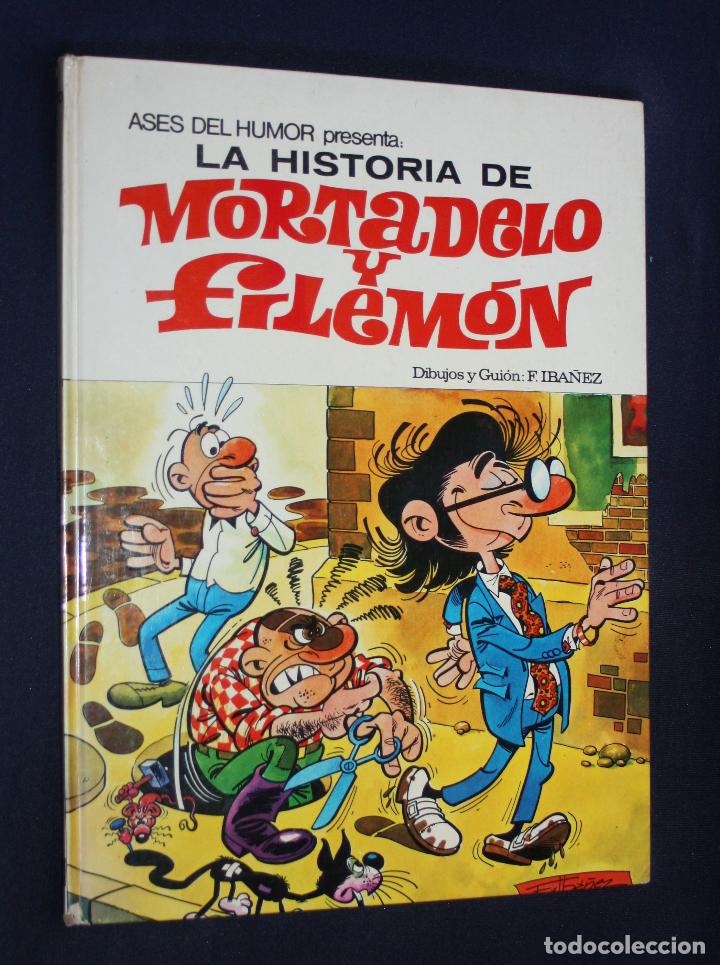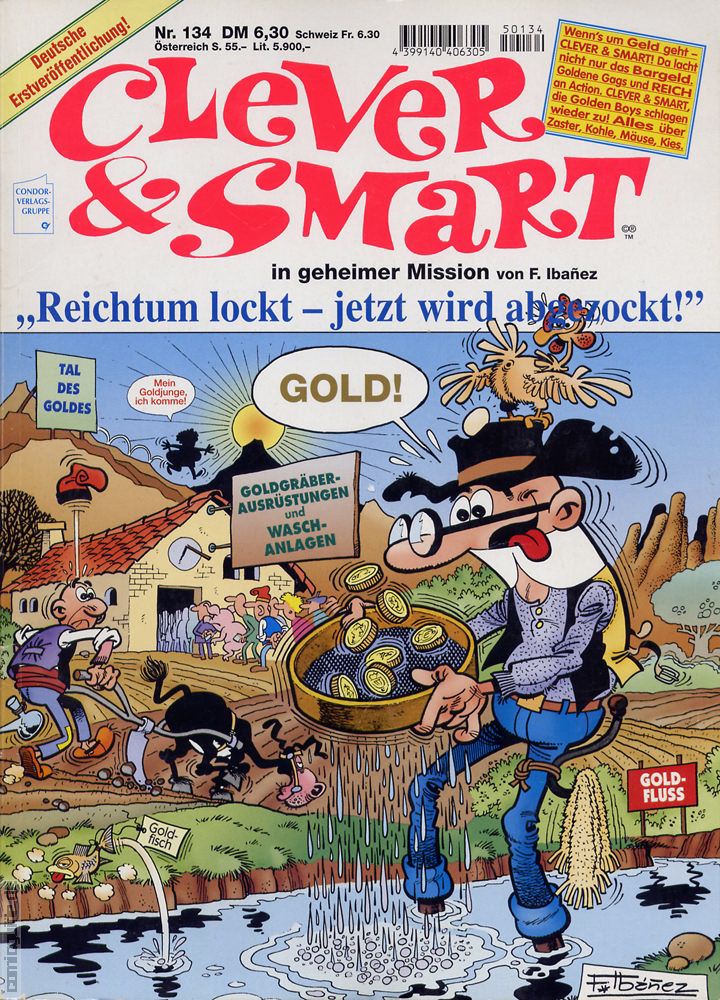


Some of these pieces (like the “Little Hiawatha” adventures) were also published in the German “Micky Maus” magazine. Jordi David collaborated in the Danish “Donald Duck”magazine for thirty years, illustrating numerous stories and well known Disney characters, from Mickey Mouse to Little Hiawatha.
#HISTORIA DE MORTADELO Y FILEMON SERIES#
In the early 1980s, Sanchís also set up another studio where he worked for the German comic series “Fix and Foxy” and for “Disney” publishing in Denmark (Gutenberghus/Egmont Group). At that time, Redo created numerous adventures, including “La historia del dinero” (Bruguera 1980). He was chosen by Sanchís to take part of the Mortadelos drawing producers team. Nmero 107 de la coleccin Ol Mortadelo, la ms longeva hasta la actualidad. Later, he created the series “Pillo y Bollo” (published in “Sacarino” and “Super Sacarino” magazines) and “Rufo” (“Mortadelo” magazine).

Vázquez chose him as an inker and his two first published pages were Mortadelo and Pulgarcito in 2075 magazine (1971). With him, he learned to ink and eventually started working for the same book publisher. This original artwork was created by Jordi David Redo, a Spanish cartoonist who began working as an apprentice in an advertising agency, where he met Mingo (Domingo Correa Expósito), a regular collaborator of Editorial Bruguera. Sobre la coleccin: La coleccin Ol naci en 1971 en Bruguera y se convirti rpidamente en uno de los mayores xitos de la editorial. You don’t have to travel far to have a great time since this exhibit is on display in the center of Madrid at the Museo ABC de Dibujo e Ilustración (Calle Amaniel, 29) until February 25, 2018.Original page of Mortadelo y Filemon’s “Star Wars” story created by Spanish comics artist Jordi David Redo En esta historieta, Francisco Ibez nos cuenta los inicios de Mortadelo y Filemn, cmo se conocieron, llegaron a ser agentes secretos y tambin el porqu de la calva de Mortadelo (un invento fallido de Bacterio). As you can see, you have a perfect excuse to come to Madrid and make the most of your trip by doing some sightseeing. The organizers are also offering workshops for children between the ages of six and twelve. This third section is entitled “ Intimidades del tebeo”, dedicated to the creation and format of the various types of comics, including foreign comics. In this section, you will find comics filled with humor, romance and adventure and even some institutional themes (politics and religion). The second section is entitled “ “Géneros, personajes y autores”. First there is a timeline that discusses the origins and the progression of comics as well as their context. The exhibit is divided into three sections. Comic artists also had correction fluid on hand in case they needed to make corrections. The originals are authentic works of art with fountain pens, paintbrushes and lots of India ink blank pages were filled with characters, vignettes and speech bubbles. In 1977 a leap was taken with the publication of the magazine Tótem containing comics for adults and that is why it was chosen as the endpoint for the exhibit. It begins in 1917 because that is when TBO was first published, the legendary magazine that gave name to the genre and marked the childhoods of many. This exhibit, great for the entire family, consists of 300 works: 180 are original drawings and 120 are comics. You can do so by visiting the exhibit “Historietas del Tebeo 1917-1977” where you will find famous characters such as Zipi y Zape, Mortadelo y Filemón, Capitán Trueno and even Tom Thumb. In Madrid you have the chance to journey through six decades of the 20th century with comic vignettes.


 0 kommentar(er)
0 kommentar(er)
